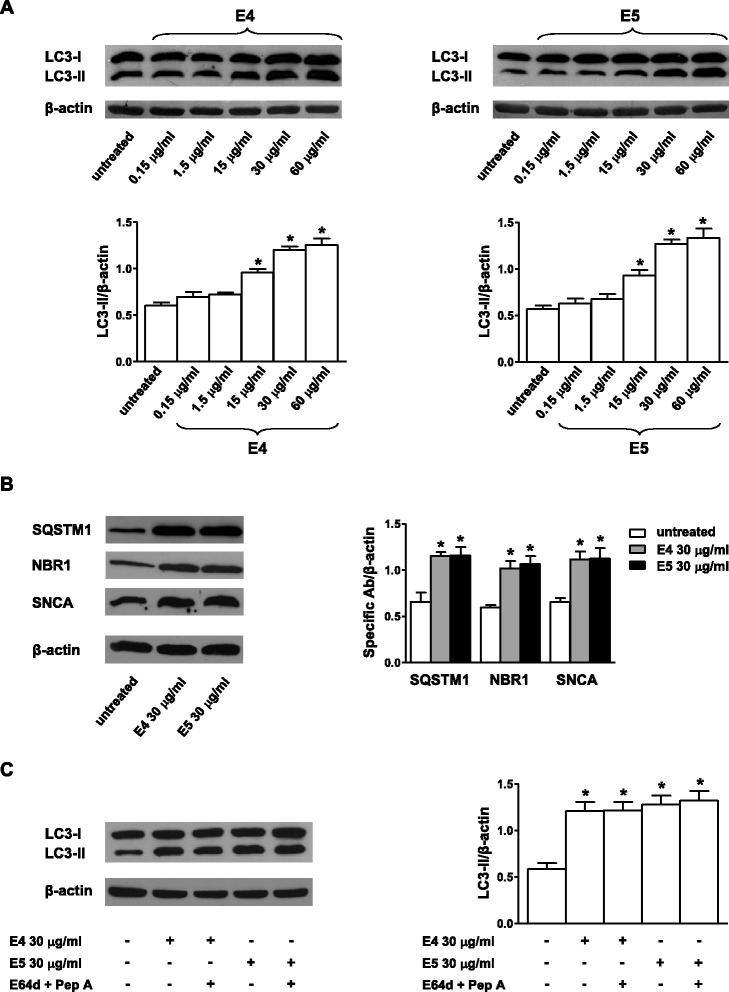Figure 2.

DEP-induced autophagic-lysosomal blockade in human T lymphocytes. (A) LC3-II Western blot analysis of T-cell lysates (30 μg/lane) from one representative healthy donor (of the 15 analyzed) after treatment with different concentrations (0.15-60 μg/ml for 48 h) of E4 or E5 particles. Densitometry analysis of LC3-II levels relative to β-actin is also shown. Values are expressed as mean ± SD obtained from independent experiments performed in cells from 15 healthy donors. Statistically significant differences are indicated in the figure. *p < 0.05 versus untreated cells. (B) Western blot analysis of autophagic-lysosomal proteins (SQSTM1, NBR1, SNCA) in T-cell lysates from one representative healthy donor (of the 15 analyzed) after treatment with E4 or E5 (30 μg/ml for 48 h) particles. Densitometry analysis of specific protein levels relative to β-actin is also shown. Values are expressed as mean ± SD obtained from independent experiments performed in cells from 15 healthy donors. Statistically significant differences are indicated in the figure. *p < 0.05 versus untreated cells. (C) LC3-II Western blot analysis of T-cell lysates from one representative healthy donor (of the 15 analyzed) after treatment with E4 or E5 (30 μg/ml for 48 h) particles in the absence or presence of the lysosomal inhibitors E64d and pepstatin A. Densitometry analysis of LC3-II levels relative to β-actin is also shown. Values are expressed as mean ± SD obtained from independent experiments performed in cells from 15 healthy donors. Statistically significant differences are indicated in the figure. *p < 0.05 versus untreated cells. SQSTM1, sequestosome 1; NBR1, neighbor of BRCA1 gene 1; SNCA, α-synuclein; Pep A, pepstatin A.
